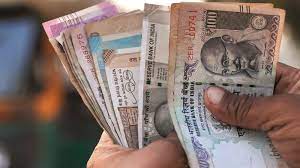Kolkata, June 27: All India poverty ratio has declined to 17.9 per cent in 2020-21 from 21.9 per cent in 2011-12 with poverty in urban areas lower than in rural areas, according to Dr Soumya Kanti Ghosh, Group Chief Economic Adviser, State Bank of India.
Poverty and inequality are ever debatable issues and have received much attention lately amidst the COVID-19 pandemic, said Dr Ghosh.
Though our official poverty ratios are till year 2011-12, independent estimates using PLFS household monthly consumption data shows that all India poverty ratio has declined to 17.9 per cent in 2020-21 from 21.9 per cent in 2011-12, with poverty in urban areas lower than in rural areas, he said.
Dr Ghosh said, ” There is now a large debate of how the ongoing COVID-19 pandemic may have exacerbated global income inequality, partly reversing the decline of the previous two decades.
Most importantly, within-country income inequality may have also increased because of job and income losses among lower-income population groups. ”
” Interestingly, studies in India have revealed (Gupta et all, NBER, Dec 2021) that inequality declined during the pandemic. In fact, the NBER study concludes that there was decline in income of the rich attributable to the high sensitivity of business income to aggregate fluctuations, ” he added.
Additionally, the study concluded that labour demand for the occupations the rich occupy may have significantly declined than demand for the services provided by the poor.
Thus, in hindsight, the pandemic may have been a leveler in terms of inequality with the poor getting protected through measures such as food transfers, Dr Ghosh said.
Against this background and the cacophony that income inequality in India has actually worsened during pandemic given that India has a large presence of informal economy does not stand the test of data scrutiny, Dr Ghosh said.
He said, ” Firstly, the gap between GDP (Gross Domestic Product) and GDI (Gross Domestic Income) in National Accounting parlance needs to be more aligned within a specified range. Data from different economies indicate that the gap between GDP and GDI (officially known as the statistical discrepancy) is typically about 1 per cent. ”
However, estimates show that since late 2020 the discrepancy between GDP and GDI has been much larger in the case of US. In the first quarter of this year US’s GDI was fully 3.5% larger than its GDP. Now, an interesting question arises; what is the case with India? Here we don’t have GDI but NSO provides data on GNI, Dr Ghosh stated.
He said, ” As per Economics 101, GDP is the total market value of all finished goods and services produced within a country in a set time period while GNI is the total income generated from its residents and businesses regardless of whether they are located in the country or abroad. For India, the average gap between GDP and GNI was around 1.1% during FY12 to FY20. ”
” However, this gap increased marginally to 1.3 per cent in FY21 and then 1.6 per cent to FY22. Also, if we compare the difference from pre pandemic levels, both GDP and GNI were 1.3% higher, indicating that income decline during pandemic and subsequent rise was strikingly similar to output decline and then a rapid recovery.
This shows that any impact on income decline was relatively short lived during pandemic, ” Dr Ghosh mentioned.
Secondly, using output and income data for 33 states for the decade ending FY21 shows that while the output growth as measured by Gross State Domestic Product has steadily increased over the decade, with a minor blip in FY21, the estimated Gini coefficient, a measure of income inequality (in both aggregate and per capita terms) has been declining even before pre pandemic and has moved in a very narrow range, he said.
Dr Ghosh said, ” The decline in income inequality has been significant since FY17, the year of big bang formalization that started with demonetization, RERA reforms and GST reform in FY18. Our results indicate that at a broader level, Gini coefficient remains constant (in the range of 0.57 to 0.58) throughout the period (FY12 to FY21). Whatever the variations is revealing in the graph is due to the fact that Y-axis is very narrowly bound. ”
Interestingly, the NBER study shows that income grew during demonetisation, though at a slower rate.
Consumption inequality seems stable during demonetization, he said.
Our results substantiate that in the Indian context, it is thus an incorrect conjecture to assume that inequality has worsened during pandemic. Our estimated Gini coefficient across states show income inequality during pandemic almost stayed at the same level. With a progressive growth in output across states as proxied by GSDP, it is clear that the fruits of such a growth have clearly reverberated and dovetailed into an inclusive growth if estimates from Gini coefficient of state-wise per capita income are any indication that has improved since FY17. India has thus done quite well during pandemic in terms of navigating income shocks across deciles of population, ” Dr Ghosh added.
(UNI)
Trending Now
E-Paper


